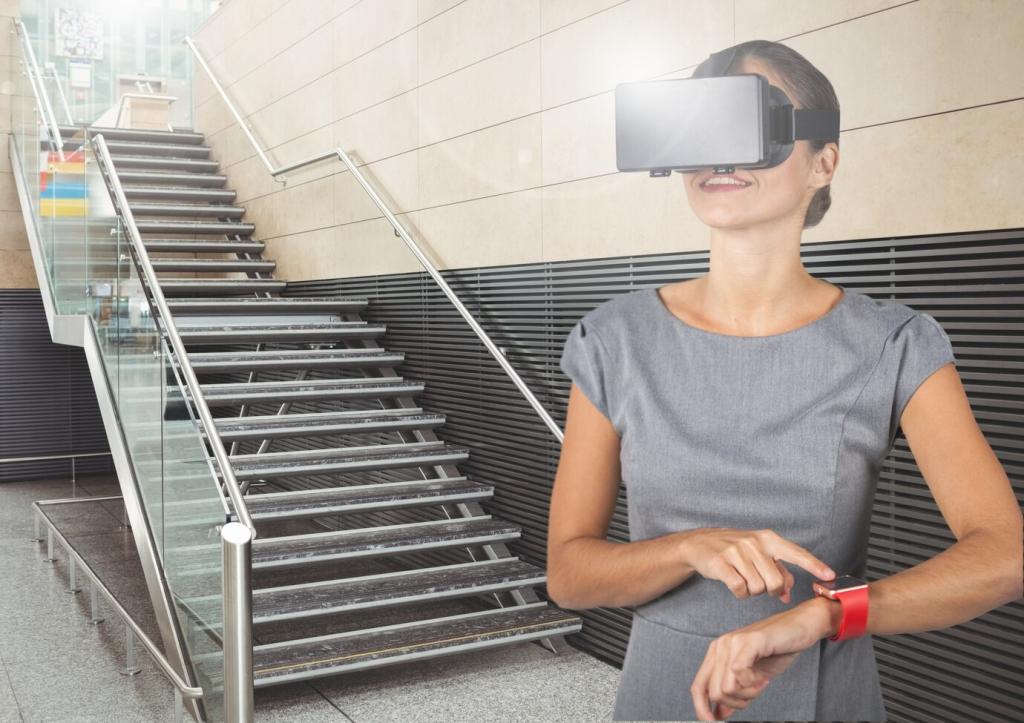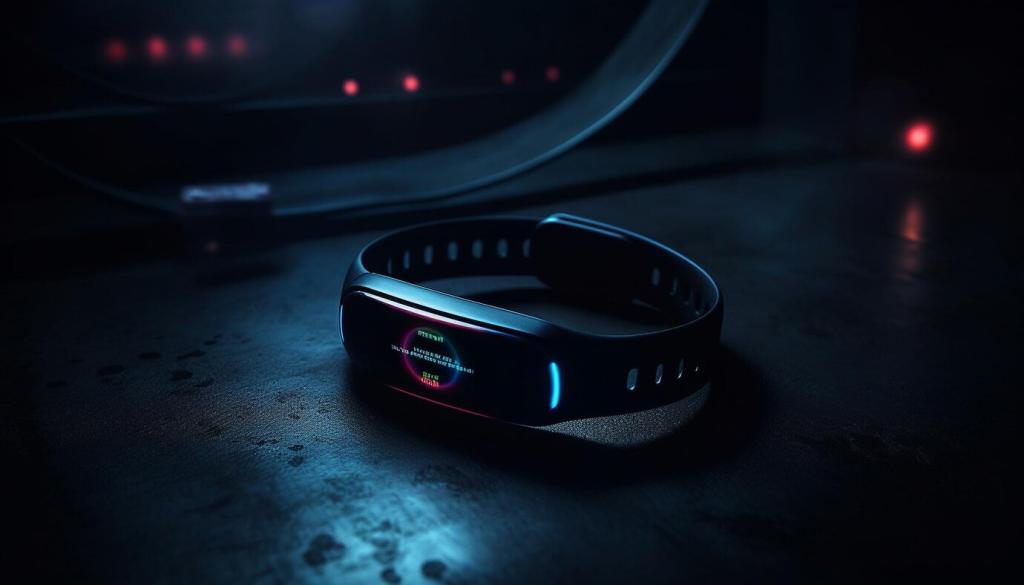Wearable technology has rapidly evolved from simple fitness trackers to sophisticated, multi-functional devices seamlessly integrated into daily life. As innovation accelerates, wearables are reshaping health, communication, fashion, and beyond. This web page explores the latest advancements and examines what the future may hold for wearables. Discover the intersection of technology and personal experience as we delve into emerging trends and transformative breakthroughs.
Miniaturization and Integration
Modern wearables are growing smaller without compromising performance. Advances in microelectronics have enabled complex sensors and processors to be embedded in fabrics and accessories. This trend of miniaturization is critical as devices become more discreet, comfortable, and integrated into one’s daily wardrobe. For example, invisible hearing aids and biometric clothing demonstrate a shift from noticeable gadgets to seamless and stylish tech.
Battery and Energy Solutions
Battery life remains a crucial challenge for wearables, as users demand all-day or even multi-day usage. Breakthroughs in low-power chipsets, energy harvesting, and fast-charging solutions are empowering longer use with less recharging. Technologies like flexible batteries and solar-integrated fabrics propel wearables toward continuous operation, making devices more reliable and user friendly for extended periods.
Data Accuracy and Sensors
Sensor technology has evolved to provide increasingly accurate biological and environmental data. Innovations in photoplethysmography, ECG, and accelerometry allow wearables to deliver medical-grade measurements in real-time. Enhanced accuracy not only deepens user trust but also unlocks new applications, such as remote monitoring for chronic conditions and early disease detection right from your wrist.
Health and Wellness Revolution
Wearable devices have become powerful allies in chronic disease management. By providing continuous monitoring of glucose levels, heart rhythms, or blood pressure, they help patients and healthcare providers make better-informed decisions. These advancements empower users to detect anomalies early and intervene swiftly, enhancing quality of life and reducing emergency incidents.
Through 24/7 tracking of metrics such as sleep patterns, stress levels, and activity, wearables offer users deep preventive health insights. Artificial intelligence analyzes this constant stream of data, identifying trends and flagging early warning signs. This proactive approach encourages individuals to modify behaviors before issues escalate, supporting a healthier, more sustainable lifestyle.
The latest wearables now explore the frontiers of mental health by detecting physiological cues related to stress, mood fluctuations, or anxiety. Devices can prompt relaxation exercises, breathing techniques, or mindfulness reminders. By integrating unobtrusive monitoring with supportive feedback, wearables encourage improved emotional well-being and help break stigma by making self-care more accessible.
Fashion Meets Functionality
01
Smart fabrics represent the next leap in wearable technology by embedding sensors, circuits, and connectivity directly into garments. From fitness clothing that tracks muscle activity to business attire that discreetly monitors posture, these innovations combine high-tech monitoring with comfort and style. The future points toward completely washable, stretchable fabrics that can adapt to a user’s daily life.
02
Consumers seek wearables that reflect their unique tastes and personalities. Customizable digital displays, interchangeable straps, and modular components allow users to adapt their devices for any occasion. Advances in 3D printing and on-demand manufacturing could soon make personalized, tailor-fit wearables available at scale, blending individuality with technological innovation.
03
Major fashion houses are entering the wearable technology arena, bringing high-end aesthetics to smart devices. Collaborations between tech companies and designers such as Hermès and Apple or Swarovski and Misfit combine luxury materials with cutting-edge functionality. This fusion elevates wearables from utilitarian tools to aspirational lifestyle accessories, broadening their appeal to style-conscious consumers.
Many wearables now support cellular connectivity, freeing users from dependence on smartphones. This capability allows calls, messaging, and data usage directly from the device, extending digital presence and enabling more convenient communication, especially during active or hands-free situations. Such independence is essential for users seeking streamlined and always-available connections.

Next-Gen Fitness and Sports Applications
State-of-the-art wearables capture detailed biomechanical data—including stride, cadence, jump height, and joint angles. By analyzing this rich information, athletes and casual users alike can refine techniques, prevent injuries, and enhance performance. Real-time feedback enables immediate corrections during training, unlocking new potential for safe and effective workouts.

The Rise of Augmented and Virtual Reality Wearables
Immersive Entertainment
AR and VR headsets deliver breathtaking content—from cinematic experiences to interactive gaming—right before users’ eyes. Enhanced spatial audio, motion tracking, and vibrant displays transport users into alternative realities, revolutionizing how stories are told and consumed. Immersive entertainment is no longer confined to screens, but rather experienced as a fully embodied journey.
Educational Transformation
Wearable AR and VR solutions are transforming learning by making abstract concepts tangible and accessible. Students can explore historical sites, manipulate 3D models, or practice surgical procedures in safe, controlled environments. These technologies cater to diverse learning styles and foster deep engagement, bridging the gap between theoretical knowledge and practical understanding.
Professional Applications
Industry and business are embracing AR and VR wearables for training, design, and remote collaboration. Architects preview building plans in full scale, medical professionals practice surgeries, and teams engage in lifelike meetings regardless of location. Such applications drive efficiency, creativity, and safety, demonstrating that wearable realities are not just futuristic fantasies but practical tools for productivity.
Security, Privacy, and Ethical Considerations
Data Protection and Encryption
Wearables collect vast amounts of personal data, from health metrics to geolocation, making robust encryption and security protocols vital. Leading manufacturers are investing in advanced security measures to prevent unauthorized access or breaches. Transparent data policies and end-to-end encryption provide users with peace of mind while using their devices for sensitive activities.
User Transparency and Consent
Gaining informed user consent is paramount as devices process ever more intimate information. Wearables must offer clear, easily understood privacy settings and disclosures about what data is collected and how it is used. Empowering users to control their information builds enduring trust and helps ensure compliance with global data protection regulations.
Ethical Design Choices
Manufacturers face ethical dilemmas over the potential uses and misuses of wearable technology. Issues such as surveillance, biometric profiling, and potential psychological impacts require thoughtful design and policy interventions. Engaging ethicists, regulators, and diverse stakeholders ensures innovation aligns with social values and protects individual freedoms as the technology matures.
